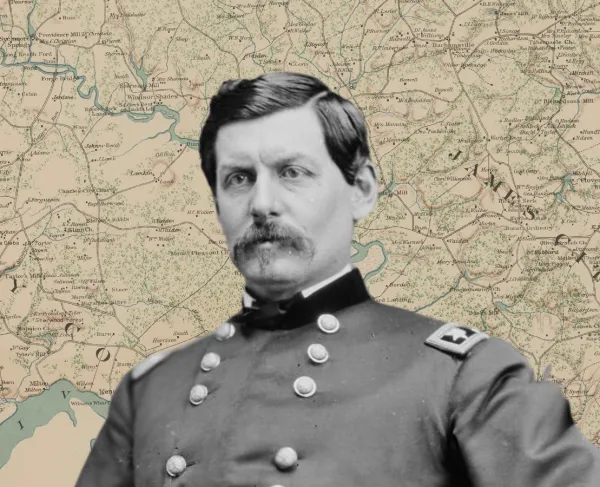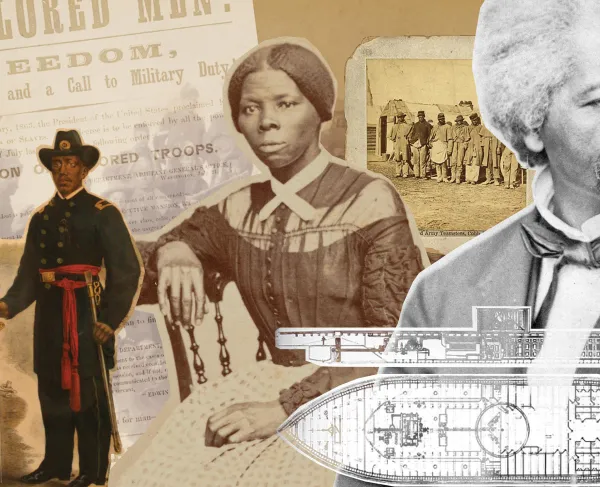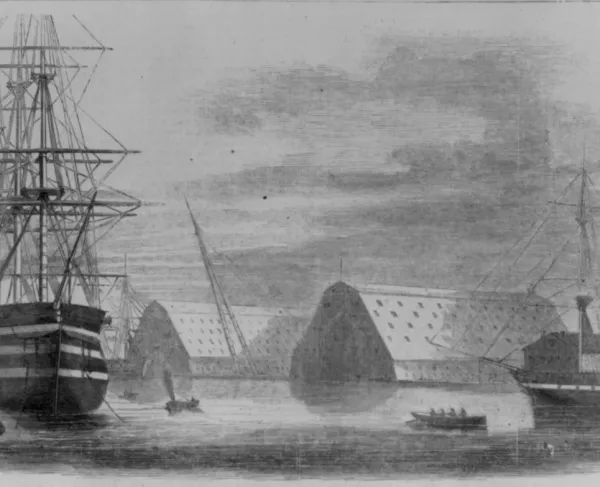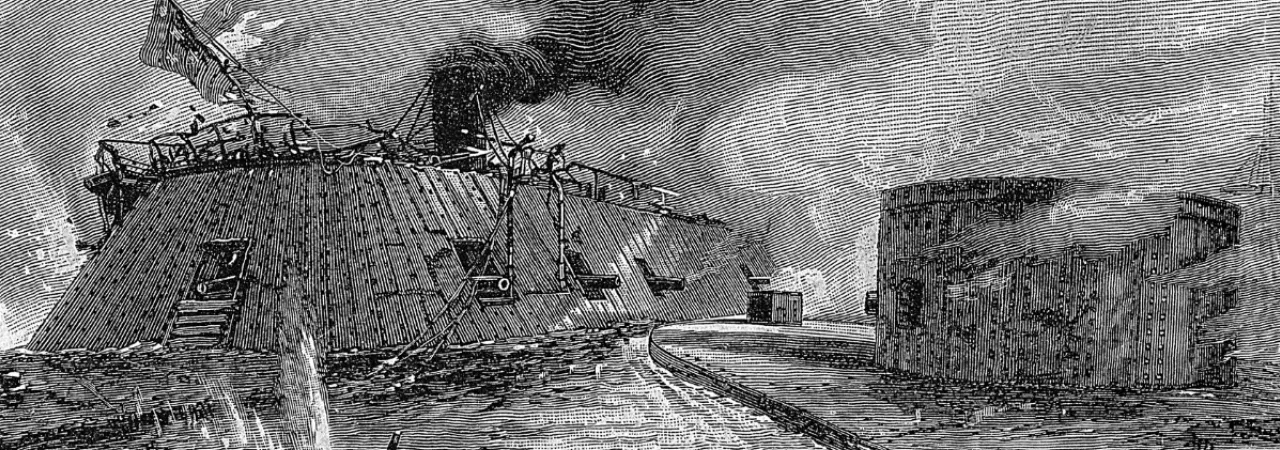
It was here at Hampton Roads that the true power of ironclad warships would be discovered. And it was here that the revolutionary USS Monitor, with its armored rotating turret, would first enter combat. We hope that these ten interesting facts will help expand your knowledge and appreciation of this important Civil War naval battle.
Fact #1: The CSS Virginia and USS Monitor were not the first ironclad warships, but they were the first ironclads to battle against one another
The Virginia and the Monitor were not the first ironclad warships. In November 1859, the French navy had launched La Glorie, the first ironclad battleship. The Royal Navy, in response to the new French warship, had launched HMS Warrior, an iron-hulled frigate, in October of 1861.
Even in the American Civil War, the Virginia and Monitor were not the first ironclads. To support Union naval operations on the rivers in the western theater, ironclad river gunboats (City Class gunboats) had been built, launched, and deployed by January 1862. These gunboats played an important role in the battles for Fort Henry and Fort Donelson in February of 1862.

Fact #2: The Confederacy had great difficulty in sourcing the iron plating needed for the Virginia
In October of 1861 it was determined that the Virginia (the converted ex-USS Merrimack) would require two layers of two inch iron armor plate covering its entire casement. Requiring upwards of 800 tons of iron, there simply was not that much iron available. To make up for this painful shortage, the Confederacy was reduced to scavenging old scrap iron, melting down old smoothbore cannon and iron tools, and even ripping up hundreds of miles of railroad track. The delays in obtaining and shaping these iron plates gave the Union more time to construct their counters to the growing menace of the Virginia.
Fact #3: The first “trial run” of the Virginia was its combat debut against the US Navy at Hampton Roads on March 8, 1862
On the morning of March 8, 1862, the Virginia made steam and moved slowly out into the Elizabeth River for its inaugural voyage. The Virginia's engines had not been fully tested and the armored shields for its broadside gun ports had not been installed, but these "minor details" did not greatly concern the ship's new captain, Franklin Buchanan. Buchanan, who had been selected by Confederate Secretary of the Navy Stephen Mallory for his aggressive tendencies, was determined to make the Virginia's first voyage an attack on the nearby Union navy.
Fact #4: The March 8, 1862 battle that pitted the Virginia against wooden US Naval vessels was the worst defeat in the history of the United States Navy until the Japanese attack on Pearl Harbor
While much attention has been focused on the near bloodless duel between the Monitor and Virginia on March 9, 1862, the action between the Virginia and the US Navy on the preceding day was a far bloodier affair. The Virginia’s attack on the USS Cumberland killed 121 out of 376 onboard and the subsequent attack on the USS Congress killed 27% of its crew – 120 out of 434. The CSS Virginia, on the other hand, suffered just two killed and a dozen wounded in its fight with the Union navy.
Over the two day battle, the Federal navy suffered 261 killed and 108 wounded in its struggle with the Virginia – more killed and wounded than any other sea battle in American history at that time. And March 8, 1862 would remain the bloodiest day in American naval history until December 7, 1941, when the Japanese navy struck the American fleet at Pearl Harbor.
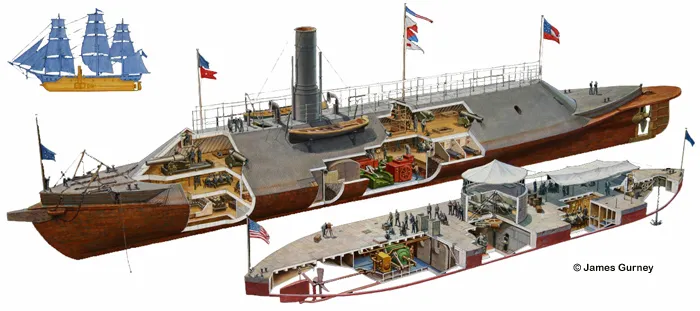
Fact #5: Despite carrying twelve large caliber guns, one of the Virginia’s most lethal weapons was a simple 1,500lb iron ram projecting from its bow
Despite the many technological innovations that were on display during the Battle of Hampton Roads, one of the most lethal weapons employed was a large, 1,500lb iron ram attached to the bow of the Virginia. This simple weapon, altogether similar to what one would have found on a Roman Trireme or Ottoman Galley, devastated the USS Cumberland. The Virginia steamed straight for the Cumberland and punched through its starboard bow with its mighty ram. Ironically, the mortal blow delivered by the Virginia’s ram almost led to its own destruction. With its ram stuck fast inside the Cumberland, the Virginia risked be carried under by the sinking Federal ship. After some effort the Virginia was able to separate and back away, but is lethal ram had broken free.
During its battle with the USS Monitor the next day, the Virginia sought to employ its ram, not knowing that this weapon now lay at the bottom of Hampton Roads.
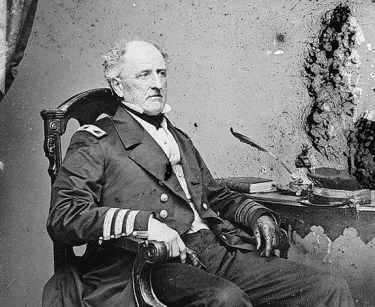
Fact #6: The Virginia’s commander, Franklin Buchanan, was seriously wounded by musket ball on March 8 and did not participate in the Virginia’s famous March 9 duel with the USS Monitor
Per the well-established norms formed during the Age of Sail, it was customary for a defeated ship and its captain to formally surrender to their victorious counterparts. After viewing a white flag above the stricken USS Congress, Franklin Buchanan ordered that the Congress be taken as a prize. Unfortunately for the Confederates, Union soldiers on shore nearby knew or cared little for naval tradition and fired upon the exposed officers and men. Franklin Buchanan, who had gone on deck to supervise this surrender, was struck in the upper thigh by a bullet and was hastily taken back into the interior of the Virginia. Removed to shore that evening, Buchanan turned over command of the Virginia to his executive officer, Lieutenant Catesby ap Roger Jones who would command the famous ironclad during its fight with the Monitor the next day.
Buchanan, who would recover from his wound, captained the CSS Tennessee in its battle with Rear Admiral David Farragut’s squadron in the Battle of Mobile Bay. During that battle, Buchanan would suffer a broken leg and would surrender with his ship on August 5, 1864.
Fact #7: Sensing that their shells could do little damage, even at close range, the Virginia ceased firing at the Monitor during the battle
Two hours of close-range naval gunfire finally convinced the Confederates of the futility of wasting shell and powder on the Monitor. Lieutenant John Eggleston onboard the Virginia, when asked why his gun crews had stopped firing at the Monitor, stated that “[a]fter two hours of incessant firing I find that I can do her [the Monitor] about as much damage by snapping my thumbs at her every two minutes and a half.”
The Virginia's armor penetrating capabilities were further reduced by its carrying only explosive shells, rather than solid shot. At one point in the battle, crew members aboard the Virginia resorted to attempting to fire muskets into the open gun ports of the Monitor.
Fact #8: If the Monitor had used larger gunpowder charges in its 11-inch guns, it's likely that it would have holed and sunk the Virginia
The Monitor had been hurried down to Hampton Roads shortly after its launch and little time had been set aside for testing this new, radical weapon system. Despite being designed to carry two 12-inch Dahlgren naval guns, the Monitor launched with two smaller 11-inch Dahlgrens within its armored, rotating turret. To prevent any catastrophic gun bursting within the confined turret, each of the 11-inch guns was restricted to using 15-lb gunpowder charges. Even with this lower gunpowder charge, the 165lb solid shot projectiles did much to dent and disfigure the armor plating on the Virginia. Later tests conducted after the battle showed that if the Monitor had used 25lb or 30lb gunpowder charges that its 11-inch guns would have punctured the Virginia’s hull with relative ease at close ranges.
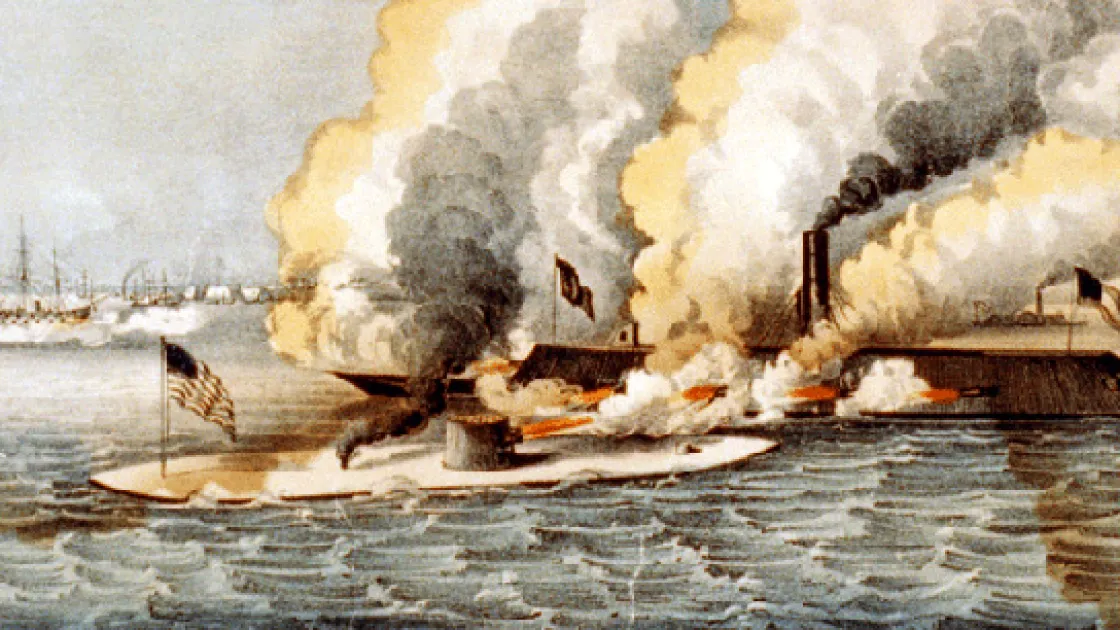
Fact #9: Ironically, as the Virginia fired more of its onboard ordnance, the ship became more vulnerable to attack
Unlike the Monitor, whose belt of armor descended well below its waterline, the Virginia’s iron plating extended barely to its waterline when fully loaded. With each broadside, the Virginia would expend 350lbs of ordnance. And after two hours of firing upon the Monitor and other nearby ships, the Virginia had lightened its load by 5 tons. Ironically, as the ship became lighter it also became more vulnerable. As the ship lightened, its unarmored sides, below the iron casemate, were visible above water and could have been more easily punctured.
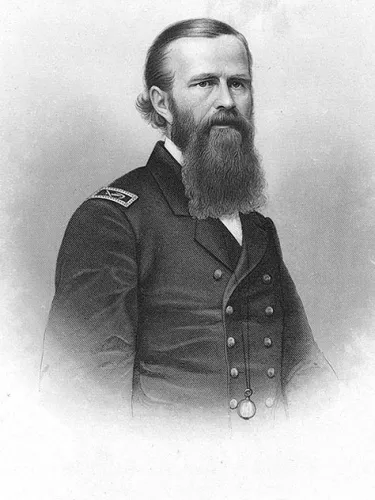
Fact #10 Franklin Buchanan and John L. Worden both became superintendents of the United States Naval Academy in Annapolis, Maryland
John L. Worden, promoted to rear admiral after the war, was the commandant of the United States Naval Academy between 1869 and 1874. A drill field at the Academy is named for Worden.
Prior to the Civil War, Franklin Buchanan was the first superintendent of the Unites States Naval Academy (1845 - 1847). The stately Buchanan House, current residence of Academy superintendents, is named after this famous Confederate admiral.
Learn More: USS Monitor: A Cheesebox on a Raft
Related Battles
369
24
